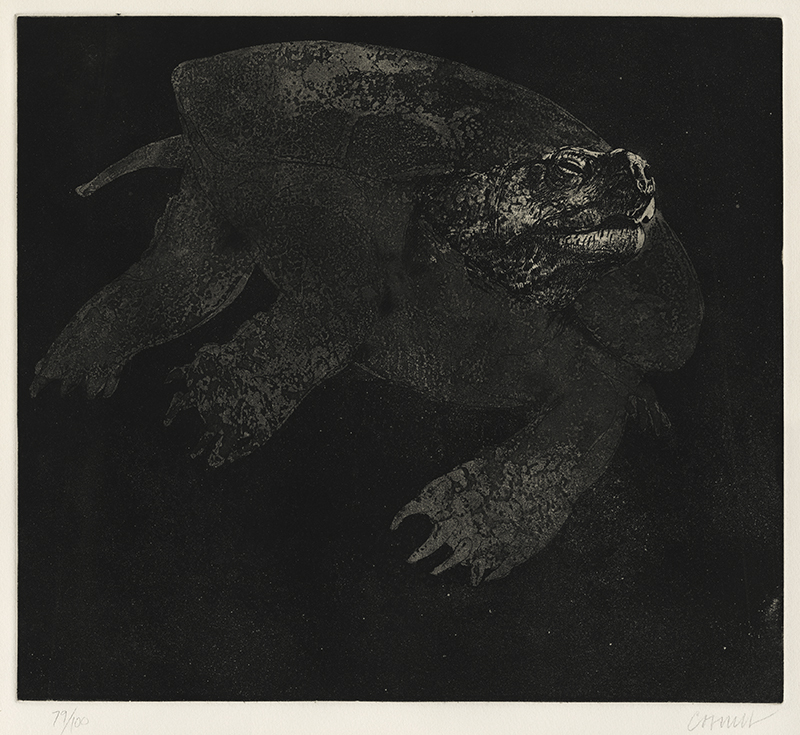
19th, 20th & 21st Century Fine Prints
707-546-7352 · fax 707-546-7924 · web: www.annexgalleries.com · email: artannex@aol.com
Snapping Turtle, Second State by Thomas Browne Cornell

Snapping Turtle, Second State
Thomas Browne Cornell
Snapping Turtle, Second State
Thomas Browne Cornell
1937 - 2012 (biography)Thomas Cornell depicts a large Snapping Turtle, emerging from the dark water, swimming directly toward the viewer, his massive feet propelling him forward. This is a second state impression, printed in an edition of 100. It is also titled "Turtle II" in pencil on the verso.
According to North Carolina's website "Snappers are so named because they defend themselves by snapping and biting aggressively when handled or otherwise molested. They are top-level predators in many food chains and are important components in aquatic ecosystems. Snapping turtles have large heads with powerful jaws and necks. The carapace has a jagged posterior edge and three longitudinal keels, which are most prominent in young specimens. The plastron is small and cross-shaped. The tail, adorned above with large, saw-toothed scales, is much longer than that most other turtles. The shell offers only limited protection to the head and limbs, causing these turtles to rely largely on their strong jaws for defense."
Painter, printmaker, sculptor, and edcuator Thomas Browne Cornell was born on March 1, 1937, in Cleveland, Ohio, to Norman Cornell and Betty Browne. He received his B.A. in Art from Amherst College and studied at the Yale University School of Art and Architecture. Cornell was a Professor of Art at the University of California, Santa Barbara, for two years before before joining the faculty at Bowdoin College in Brunswick, Maine in 1962, establishing the visual arts program at the college. In June of 2012, Cornell retired from teaching after 50 years as a professor at Bowdoin. He was appointed the Richard E. Steele Professor of Visual Arts in 2001.
Cornell began his career with drawings and etchings, which were widely distributed and were included in many fine art publications. Since the mid-1970s, Cornell dedicated himself primarily to oil painting. In his work, Cornell depicted communities of people interacting with nature. Against artistic trends, Cornell was committed to moral content, focusing on issues of social, economic, and environmental justice. His work spans printmaking, marble and bronze sculpture, portraits, landscapes, and still lifes.
Cornell's work received considerable critical acclaim over the years, including a full-page review in the New York Times, which led the paper's weekend Arts section. Among his numerous honors was a grant from the National Endowment of the Arts and election to the National Academy of Design. Cornell's work is included in the collections of museums across the country, including the Museum of Modern Art, art museums at Harvard and Princeton Universities, the National Museum of American Art, and the Beinecke Library at Yale University.
Thomas Browne Cornell died in Brunswick, Maine on Decembet 7, 2012.


